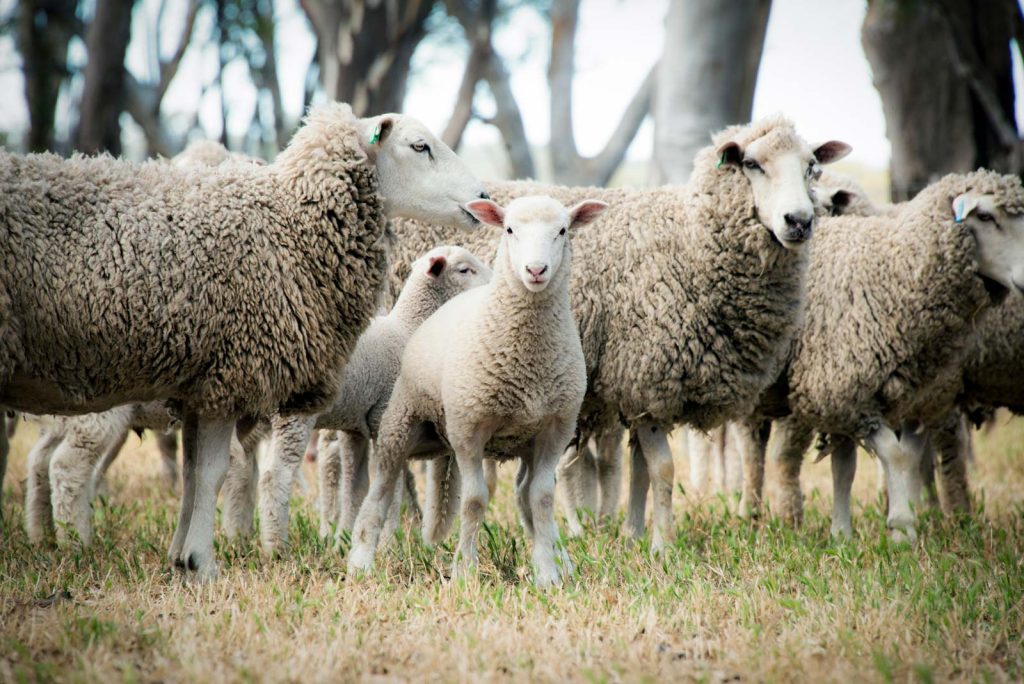Agrivoltaics Handbook
A guide for solar developers and landholders
This handbook provides comprehensive guidance on agrivoltaics in Australia, focusing on the co-location of agricultural production with solar development. It details the planning, design, and implementation of such projects, particularly for sheep grazing, horticulture, and crops under solar panels, highlighting benefits for both solar developers and landholders, while offering practical advice and addressing potential challenges.
Agrivoltaics (or agrisolar) involves co-locating agricultural production systems with solar development, providing a dual-use solution for renewable energy and farmland preservation.
Sheep Grazing Under Solar
Sheep grazing is identified as the most cost-effective way to manage vegetation within a solar farm in Australia, ensuring continued agricultural use.
Benefits:
* Advantages for Sheep: Shelter and shade from panels protect against extreme heat, wind, dust; provide a beneficial microclimate for pasture quality.
* Pasture Quality: Green grass under panels remains available longer; concentrated water runoff creates semi-irrigated strips for better feed.
* Wool Production: Promising early results suggest positive impact on wool quality and quantity due to protection from heat, dust, and contaminants.
* Risk Mitigation: Less damage and worker safety risk than slashing; avoids rock propulsion, ignition risk, and contractor injuries.
* Cost-Effectiveness: Significantly less expensive than mechanical slashing (estimated $100-$250/hectare in 2025).
* Social License: Retaining agricultural production on solar sites increases community acceptance for renewable energy transition.

Common Mistakes to Avoid
* Underestimation of logistical challenges and vegetation management costs.
* Poor understanding of agricultural operations.
* Lack of Australian-based planning capability.
* Misaligned objectives between developer and operator.
* Operations/maintenance contracts not budgeting for vegetation management.
* Unsuitable paddock sizes or structures.
* Failure to engage local agronomic and livestock expertise.
* Lack of land management preparation prior to construction.
* Lack of access to adjacent pasture for stock movement/treatments.
* Incorrect grazing agreement approach (treating as agistment vs. grass cutting service).
* Poor communication and coordination with graziers.
Checklist of Decisions (for developers):
* Pre-construction Planning & Design: Vegetation management plan, alignment of incentives, scale of development, agricultural expert input, panel structure suitability, paddock layout, infrastructure location (gates, water, yards), pasture retention/sowing, stocking rate requirements, off-site stock holding.
* Contracting a Grazier: Asset owner vs. operator contracting, suitability of original landholder, seeking other parties, grazier characteristics (location, personality), stock transportation logistics, grazier reliability for unsupervised site attendance, adherence to site restrictions (H&S, communications, vehicle movements).
* Technical Information for Successful Grazing:
* Paddock Layout & Infrastructure: Optimal paddock sizes (20-60 ha depending on rainfall), retention of farm dam infrastructure, internal fencing ($15-30/meter) and gates (access grids $7,000-10,000), water points ($3,000-5,000 per trough), stock handling yards ($20,000 for 500 sheep), exclusion fencing (if needed for predators).
* Site Trafficability: Solar rows spaced 5-7m apart, panel mounting height at least 2m (50cm clearance), no perpendicular drive shafts for unhindered movement of vehicles and mustering.
* Pasture Establishment: Selection of palatable, slow-growing, groundcover-providing species suited to climate/soils (e.g., annual ryegrass, clover, lucerne, cocksfoot); importance of vegetation management plan (pre-, during, post-construction). Sowing pastures before construction is 3-5 times cheaper.
* Stocking Rates: Default rates based on rainfall (4-6 sheep/ha for high, 2-3 for moderate, 1 for low rainfall); ability to increase for peak growth (2-3x default) and de-stock during drought (when groundcover is below 70%).
* Pasture Management: Limiting pasture height (100mm insurance threshold), maintaining groundcover (70% coverage), weed control (herbicides, biosecurity plan, awareness of withholding periods), fire risk management (consulting fire authorities, targeted herbicide use).
* Mechanical Slashing: Required when sheep can’t manage grass height, typically in spring; more expensive than grazing but necessary for compliance.
* Combined Management: Single provider for grazing and slashing is optimal for cost reduction.
* Soil Treatment: Fertiliser/lime application based on soil tests; caution for corrosive effects on solar equipment.
* Carbon Sequestration: Opportunities for carbon credits but requires due diligence and consistency with vegetation management objectives.
Sheep Grazing Agreement Structure
* Key Principles: Graziers provide a cost-saving service; agreements must be free/paid for; 24/7 site access; solar owner covers infrastructure costs; larger projects more appealing; limited grazier liability for sheep damage; respect grazier knowledge; aligned budgets.
* Service Delivery Models: Agreement with landowner, neighboring grazier, remote grazier (all require separate slashing contract); grazier also slashes for fee, or grazier provides fixed vegetation management service (integrates grazing and slashing).
* Key Provisions: Term of agreement, licence vs. agistment, payment terms (including transport costs), liability for damage, changes/termination, good faith operation, contact details.
* Grazier Responsibilities: Stocking rates (base, increase, de-stock), allowable sheep breeds/age, animal health, site access terms, transport of stock, vehicle types, sheep removal for spraying, communication protocols, weed/damage notification, liability for negligence, insurance, site rules, fire risk management, equipment disposal.
* Solar Company Responsibilities: Reasonable access, provision/upkeep of grazing infrastructure, communication protocols, weed control, dead animal disposal.
* Example Communications Protocol: Defines format (text/email), contacts (operations manager, grazier), operator/grazier notification responsibilities (de-stocking, stock increase, spraying, welfare issues, site attendance, mustering, weed/damage notification, animal care), and scheduled meetings.
* Professional Advice Checklist: Agronomists for vegetation plan, pasture, weed control, fertilizer; livestock advisers for infrastructure and stocking rates; carbon specialists for carbon projects.
